Navigating Mac-Compatible RAM: Essential Insights
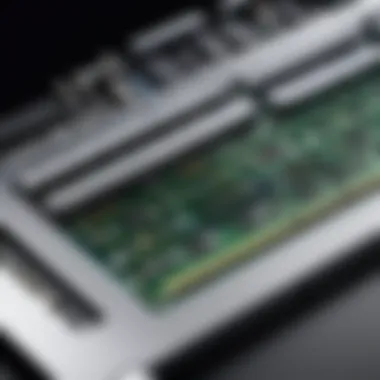
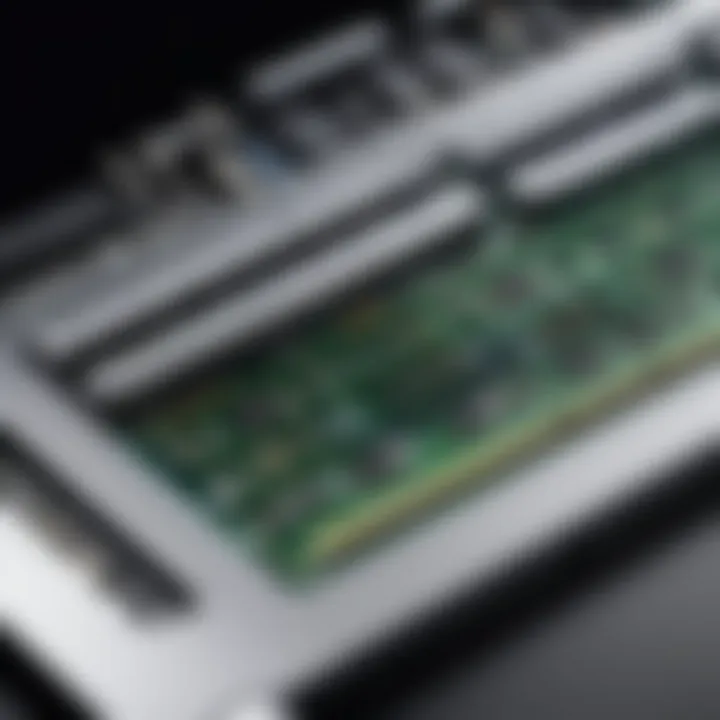
Intro
In today’s tech-savvy world, upgrading your Mac’s RAM might feel like stepping into the deep end of a pool without knowing how to swim. However, ensuring your Mac has the appropriate compatible RAM can significantly boost its performance, especially for users who push their systems to the limits through gaming, multimedia production, or intensive applications like software development.
Understanding what makes RAM compatible with Mac systems isn’t just about slapping in sticks of memory and hoping for the best. There are crucial factors to consider, such as the specific model of the Mac, the type of RAM that is supported, and its installation process. Given the variety of configurations, knowing these elements can dramatically change the way your computer performs.
For tech enthusiasts, gamers, and computer builders, this guide dives into the nitty-gritty of Mac-compatible RAM. Readers will learn about the important specifications, explore comparisons with similar products, and uncover installation tips that are essential for maximizing performance. By the end, you will be equipped with the knowledge needed to navigate the RAM landscape and make the best choices for your Mac.
Overview of the Product
Purpose and Benefits
The main goal of upgrading RAM in a Mac is to enhance system performance. This improvement manifests in various aspects, such as faster application loading times, smoother multitasking, and an overall more responsive operating environment. When your Mac has the right amount of RAM, it can handle more data at once, reducing lag and providing a seamless user experience.
Target Audience
If you’re a tech enthusiast or a gamer, the term “compatible RAM” should be at the forefront of your upgrade discussion. Understanding who benefits from upgraded RAM is essential. This upgrade is particularly appealing to:
- Gamers: Looking to run demanding games at high settings.
- Creative professionals: Engaged in video editing, graphic design, or software development, needing high efficiency.
- Everyday users: Who simply want a smoother experience for daily tasks and browsing.
Key Features
When seeking out RAM for a Mac, you’ll want to keep an eye on the following features:
- Compatibility: Must match the specific model’s requirements.
- Clock Speed: Affects overall performance; higher speeds yield better results.
- Capacity: Higher capacity translates to more efficient multitasking.
- Latency: Lower latency means quicker responses within applications.
Technical Specifications
Detailed Product Specs
Understanding the technical specifications can be quite dense but is crucial for selecting the right RAM. Here are core specs you’ll encounter:
- Type: Mac requires either DDR3, DDR4, or LPDDR3 depending on the model.
- Speed: Ranges from 1066 MHz to 3200 MHz, with varying performance added.
- Capacity: Units available typically range from 4GB to 64GB, depending on machine compatibility.
CPU Characteristics
The CPU interacts directly with RAM, so it is vital to consider the central processing unit's architecture when upgrading RAM. Intel Macs generally pair well with various RAM speeds and sizes, while Apple silicon might have different specifications.
GPU Features
If gaming or graphical work is your niche, consider how your RAM can complement the GPU. Macs using integrated graphics may benefit differently compared to those with dedicated GPUs. It’s all about balance and synergy in your setup.
Memory Details
Memory bandwidth and clock speed dictate data transfer rates, impacting the overall performance. Faster RAM can effectively reduce bottlenecks and enhance rendering times, especially for graphics-intensive tasks.
Performance Benchmarks
Benchmarks, provided by various tech review sites, can give insight into how RAM performs under load. Look for assessments comparing real-world performance metrics like multitasking and gaming responsiveness. Regular updates from trusted sites can keep you in the know.
Comparison with Similar Products
Market Competitors
In today’s market, numerous brands produce Mac-compatible RAM. Crucial, OWC, and Kingston are just a few names at the forefront, each offering distinct advantages depending on user needs. Research into each option can help delineate which product offers the best bang for your buck.
Comparative Analysis
When evaluating RAM, consider:
- Price vs Performance: Sometimes, spending a bit more can yield significant performance returns.
- Warranty: A more extended warranty can indicate confidence in the product's durability.
- User Reviews: Real-world user feedback generally provides insights into longevity and functionality.
Best Use Cases
Choosing the right RAM depends heavily on your usage scenario.
- For gaming, opt for high-speed options with greater capacities to handle modern titles.
- For creative workflows, balance speed with stability to ensure a usable design experience.
Installation and Setup Guide
Requirements for Installation
Before diving into installation, ensure you have the following:
- Correct Mac model specifications.
- Compatible RAM sticks.
- A clean work area free of static.
- Necessary tools: a screwdriver (usually Phillips).
Step-by-Step Process
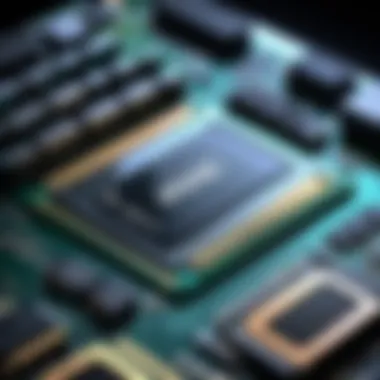
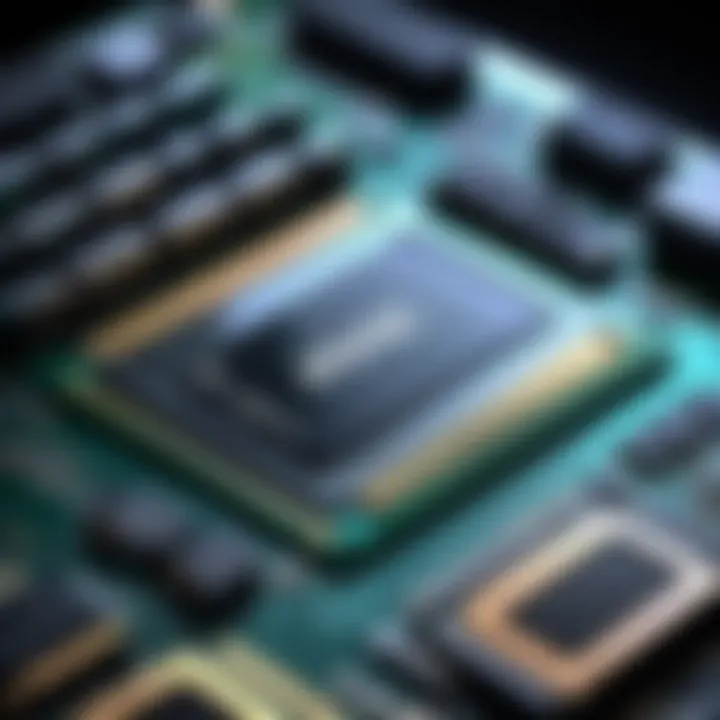
- Shut down your Mac and disconnect all cables.
- Open the back panel carefully using the screwdriver.
- Locate the RAM slots, and give them a gentle clean if needed.
- Remove existing RAM, if applicable, by releasing the clips.
- Insert new RAM sticks until clicks into place, ensuring no wobble.
- Reconnect the back panel and fire up your Mac.
- Run a system check in the settings to verify RAM recognition.
Tips for Optimizing Setup
To ensure that your RAM setup thrives, consider:
- Keeping software updated for optimal memory management.
- Regular cleaning of files and cache for enhanced performance.
- Monitoring system performance periodically using Activity Monitor or similar tools.
Help Sections and Troubleshooting
Common Issues and Solutions
- Mac doesn’t recognize new RAM: Check for proper seating or compatibility.
- System crashes after installation: Backtrack to ensure the correct type and size have been used.
- Performance is still laggy: Consider other components like CPU or hard drives may be bottlenecks.
Expert Tips
- Take your time when handling hardware; rushing can lead to mistakes.
- Always consult Apple's own resources for compatible configurations to avoid headaches.
Preamble to Mac Compatible RAM
When venturing into the realm of computing, the significance of RAM in performance cannot be overstated, especially for Mac users. Understanding Mac compatible RAM is essential because it can spell the difference between a lagging system and one that operates like a finely tuned machine. The right RAM ensures that your applications run smoothly, multitasking feels effortless, and gaming experiences are unhindered. This article is a deep dive into the components, types, and implications of upgrading RAM for Apple systems, serving as a vital resource for those looking to enhance their machines.
The Role of RAM in Computer Performance
Random Access Memory (RAM) acts as your computer’s short-term memory. Imagine trying to cook a multi-course meal without a workspace to lay out the ingredients—a real headache, right? Much like that, RAM organizes data your Mac uses for running programs. The more RAM you have, the greater your capacity for running multiple tasks simultaneously without dropping a beat.
In practical terms, suppose you’re editing a video, browsing multiple tabs, and running a music application at once. With inadequate RAM, your Mac may slow down, freeze, or even crash, derailing your workflow. Conversely, sufficient and compatible RAM boosts speed and stability, improving not only user experience but also productivity.
Understanding Compatibility for Mac Systems
Now, here’s where things can get a bit tricky—compatibility. Macs have different specifications than your run-of-the-mill PC. And not all RAM sticks are created equally. Each Mac model has specific RAM requirements set by Apple’s design. Failing to align with these can lead to performance issues or, worse, damage to your system.
For a smooth upgrade experience, it’s imperative to check your Mac’s model and its supported RAM type. For example, an older MacBook might require DDR3 RAM, while a newer Mac would take DDR4. Knowing these distinctions is crucial because inserting incompatible RAM could lead to icy stares from your computer during boot-up—nothing happens and you're left puzzled.
"Compatibility is not just a detail; it's the cornerstone of system efficiency and performance."
In summary, understanding the ins and outs of Mac compatible RAM arms you with the knowledge necessary for making informed decisions. This lays the groundwork for the subsequent sections where we will explore different types of RAM and how to identify what best suits your Mac.
Types of RAM for Mac
Understanding the different types of RAM available for Mac systems is crucial for anyone looking to enhance their computer's performance. RAM, or Random Access Memory, acts as a short-term data storage that allows a computer to access and process data more quickly. Choosing the right type not only affects how effectively a Mac can run demanding applications but also influences the overall longevity and efficiency of the system.
Using the appropriate RAM can lead to significant improvements in multitasking capabilities, reduced load times, and a smoother user experience. For Mac users, selecting the right RAM also means considering compatibility with their specific model. Let's delve into the main types of RAM applicable to Mac systems, starting with DDR3 and moving on to DDR4 and LPDDR varieties.
DDR3 RAM: Overview and Benefits
DDR3 RAM, or Double Data Rate 3 Synchronous Dynamic RAM, marked a significant leap in technology when it emerged. It operates at a lower voltage compared to its predecessor, DDR2, and delivers faster data transfer rates, averaging around 8.5 GB/s. Its speed makes it particularly useful for users who engage in basic tasks, such as web browsing or word processing.
Some benefits of DDR3 RAM include:
- Cost-Effectiveness: Generally, DDR3 memory is more budget-friendly, making it a sensible choice for users looking to upgrade their older Mac systems without breaking the bank.
- Sufficient Speed for Everyday Use: For most everyday applications like email, document editing, or streaming movies, DDR3 can be more than adequate.
However, as technology progresses, the limitations of DDR3 become apparent for more intensive tasks like gaming or heavy video editing.
DDR4 RAM: What You Need to Know
DDR4 RAM is the next-generation memory standard, offering notable advancements over DDR3. With speeds often exceeding 25.6 GB/s, DDR4 introduces higher capacity support and improved efficiency. This makes it a superior choice for power users who demand performance from their machines.
Key points to understand about DDR4 include:
- Higher Bandwidth: This translates into quicker processing times, allowing for smoother operation of high-performance applications like gaming and 3D rendering.
- Energy Efficiency: DDR4 operates at lower power levels than DDR3, which can help prolong battery life for MacBook devices in particular.
If you're looking to equip your newer Mac with RAM, choosing DDR4 is usually the way to go. However, always check your Mac's specifications to ensure compatibility.
LPDDR3 vs. LPDDR4: Key Differences
LPDDR, or Low Power Double Data Rate memory, focuses on reducing the power consumption while retaining performance. LPDDR3 and LPDDR4 are often found in laptops and mobile devices, contributing to longer battery life. Here’s a quick comparison of the two:
- Performance: LPDDR4 typically offers higher bandwidth than LPDDR3, with better data transfer rates.
- Energy Savings: LPDDR4 is designed to consume less power than LPDDR3, making it a better option for devices that prioritize battery life.
When choosing between the two, consider your intended usage. If efficiency and battery longevity are your primary concerns, LPDDR4 may be the more suitable option, especially for mobile Macs.
The right choice of RAM can ensure your Mac not only stays relevant but also performs at its best, catering to your needs down the road.
Identifying Compatible RAM for Your Mac
Navigating the maze of Mac compatible RAM can feel like searching for a needle in a haystack. Once you've decided to upgrade your RAM, it's vital to ensure you pick the right components. Compatibility isn’t just a suggestion; it’s a necessity. This section delves into the tools and methods that arm you with the info you need for a seamless upgrade experience.
Checking Your Mac's Specifications


The first step in identifying compatible RAM is understanding the specifications of your specific model. Each Mac model has unique requirements when it comes to RAM, just like every car may require a certain kind of fuel. Missing this step could lead to costly mistakes or garbled messages upon installation.
- Find your Mac model:
- Check the RAM Type and Maximum Capacity:
- Go online: Look up your model on Apple’s support site for more detailed specs and guidelines. This can help you verify compatibility and avoid wandering into dangerous territory.
- Click on the Apple logo in the upper left corner of your screen.
- Select “About This Mac.” Here, you’ll see details about your hardware.
- The model information will specify the type of RAM your Mac uses. For instance, not all Macs accept DDR4; some might still be using DDR3.
- Also, ascertain the maximum RAM your model supports; installing more than this will cause your system to underperform.
Remember, knowing your specifications isn’t just about picking any RAM off the shelf. It ensures you buy a compatible product, making installation straightforward and functional.
Using System Information to Determine RAM Type
Once you grasp your specifications, the next logical step is examining the system information your Mac provides. This is akin to reading the fine print before making a purchase.
To access System Information, follow these steps:
- Hold down the Option key and click on the Apple menu.
This will give you access to a more detailed system report than the About This Mac window offers. - Navigate to the Memory section: In the System Information window, find the Memory option on the left sidebar.
Here, you can get a comprehensive view of your current RAM setup, including the type (like DDR3 or DDR4), speed (measured in MHz), and how many slots are occupied. This information is crucial for assessing both the compatibility and the potential upgrade options. - Review RAM slots: Knowing how many slots your Mac has available provides insight into whether it’s more beneficial to upgrade existing modules or add new ones. If you find that all slots are filled but you want an upgrade, it might be time to remove or replace some of the existing components.
"Understanding your Mac’s specifications and memory setups can make or break your upgrade experience."
Taking these steps seriously will not only simplify the upgrade process but also minimize the chance of hardware-related hiccups down the line. After all, every bit of knowledge gained is like adding another tool to your toolbox—one you can reliably use for better performance and a smoother computing experience.
Installation Process of Mac Compatible RAM
Installing RAM in your Mac is a task that, while it might seem daunting, can greatly enhance the machine’s performance and user experience. This section will provide clarity on the essentials of the installation process, ensuring that you are equipped with knowledge necessary for a smooth upgrade. Proper installation of compatible RAM not only ensures stability but can significantly boost your system’s speed, providing you the ability to run demanding applications effectively.
Gathering the Necessary Tools
Before diving into installation, you need to prepare a few tools. Surprisingly, it's not much more than a handful of items most folks already have at home. Here's what you should grab:
- Phillips screwdriver: This will be used to remove the cover of your Mac.
- Anti-static wrist strap: Though not strictly necessary, it helps prevent static electricity from damaging the components.
- Soft, clean surface: A decent workspace to keep parts safe and visible is vital.
Make sure your environment is clutter-free; reduce the chances of losing small screws or parts.
Step-by-Step Installation Guide
The installation step may come across as a bit challenging if you're new to upgrading computer hardware. That's perfectly normal, but following this straightforward guide will assist you in navigating the process:
- Power down your Mac: Ensure that your device is completely off, then unplug it from the wall and any peripherals.
- Remove the cover: Using the Phillips screwdriver, carefully open up the Mac. Refer to the manuals or online guides specific to your model for detailed instructions on how to do this properly.
- Ground yourself: If you’re not using an anti-static wrist strap, it’s common practice to touch a metal surface to discharge any static electricity.
- Locate the RAM slots: In most models, these are easily accessible after the cover is removed. They are likely located near the CPU.
- Install the RAM modules: Hold the RAM by the edges, aligning the notches with the slots, and then insert them firmly. Press down until you hear a click, indicating they are secured in place.
- Reassemble your Mac: Carefully put the cover back on and secure it with the screws you removed earlier.
- Power on your Mac: After everything is back in its place, reconnect power and turn on your machine.
In most cases, your Mac should recognize the new RAM automatically.
Common Installation Mistakes to Avoid
While installing RAM may seem straightforward, there are pitfalls that can trip up even seasoned enthusiasts. Here’s a quick list to keep you on track:
- Neglecting compatibility: Always double-check that the RAM you purchased is compatible with your specific Mac model before installation.
- Ignoring static precautions: Failing to take necessary anti-static measures could lead to damaging your new RAM.
- Forgetting to reseat RAM properly: If not inserted correctly, it may not function, leading to frustration.
- Not checking after installation: After installing, always check if your system recognizes the new RAM through System Information.
By adhering to the guidelines and avoiding common installation mistakes, your journey to enhancing your Mac’s performance through RAM upgrades can be both fruitful and educational.
"Understanding how to effectively upgrade your RAM can unlock profound potential in your device, allowing it to perform tasks faster and more efficiently."
Whether you're a tech-savvy user or a novice, grasping the installation process is key to optimizing your Mac’s capabilities. With patience and attention to detail, you’ll have your device up and running with enhanced memory capacity in no time.
Evaluating Performance After RAM Upgrade
Upgrading RAM in a Mac can seem like a daunting endeavor, yet evaluating performance post-upgrade is essential to ensuring that the investment pays off. This process not only highlights improvements in speed and efficiency but also sheds light on potential areas where expectations might need adjusting. After all, even the most powerful RAM won't solve every bottleneck in a system.
The benefits of evaluating system performance after a RAM upgrade are manifold. It’s about more than just observing a faster boot time or quicker app launches; it’s about understanding how the new RAM integrates with the existing hardware and whether it fulfills the intended goals of the upgrade. Considerations such as software compatibility, user workload, and overall system configuration come into play when assessing the outcome of upgrading RAM.
Benchmark Testing: Assessing Improvements
One of the most effective ways to assess performance improvements after upgrading RAM is through benchmark testing. Benchmark tests are designed to provide quantitative data that can paint a clear picture of your system's performance.
- Selecting Benchmarking Tools: Determining what tools to use is the first step. Options such as Geekbench, Cinebench, and UserBenchmark offer user-friendly interfaces to gauge performance across different metrics.
- Running Pre- and Post-Upgrade Tests: Before you install the new RAM, make sure to run a benchmark test to capture the original performance levels. After you've got the new RAM in place, run the same tests again. This comparison will visibly show the impact of the upgrade across various performance metrics—CPU, memory bandwidth, and application loading times.
- Analyzing Results Wisely: Don't take numbers at face value. Look for trends. If you see significant improvement in the scores for applications you commonly use, that’s a solid indicator of a successful upgrade. However, if numbers aren’t where they should be, it could signal compatibility issues or other hardware limitations.
"Benchmark tests not only reveal speed improvements but also expose potential compatibility challenges when integrating new RAM with existing systems."
Monitoring System Performance Post-Upgrade
Once the initial benchmark testing wraps up, continuous monitoring of system performance becomes equally important. This assessment can help identify how the RAM upgrade impacts daily usage over time.
- Utilizing Activity Monitor: activity Monitor in macOS provides real-time data on how your system's resources are utilized. Pay attention to metrics such as memory pressure, app responsiveness, and CPU usage in active applications.
- Assessing User Experience: It’s critical to take note of subjective experience alongside the hard data. Are applications loading quicker? Is multitasking more fluid? You might find improvements that aren’t just about numbers but the overall user experience.
- Looking Out for Anomalies: Stay vigilant for any irregularities, such as random crashes or unusually sluggish performance in apps post-upgrade. These could indicate that the new RAM may not be playing nice with other components, or that there are deeper issues within the machine that need resolving.
In summary, the importance of evaluating performance following a RAM upgrade cannot be overstated. Proper benchmark testing and diligent system monitoring ensure that you not only see improvements but also understand the broader effects on your Mac's functionality. Armed with this knowledge, users can refine their approach to future upgrades, making each investment count better than the last.
Common Issues and Troubleshooting
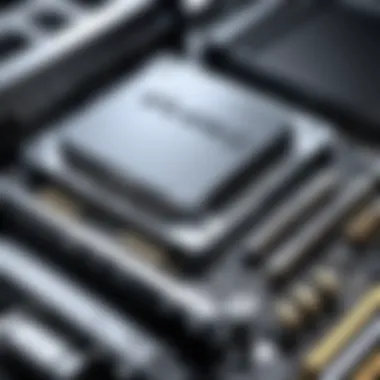
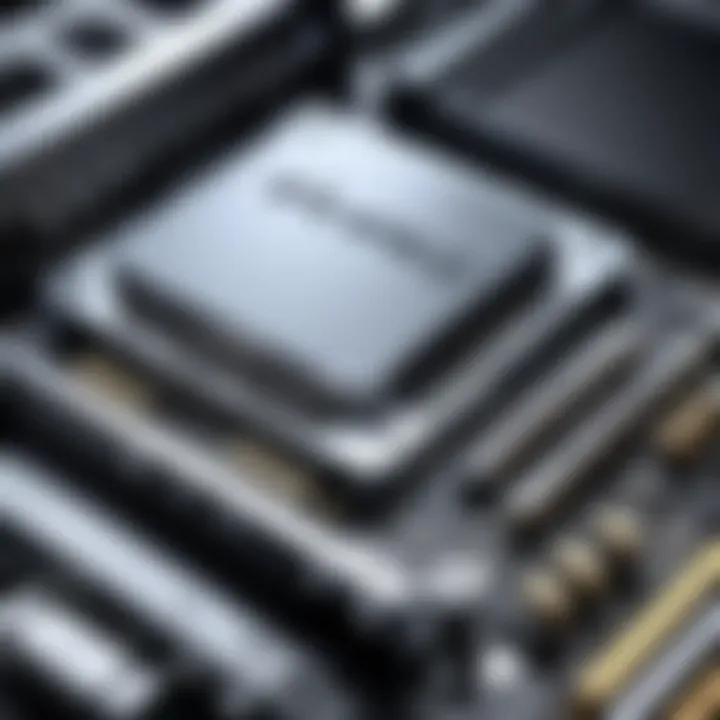
Troubleshooting is a vital aspect of ensuring that your Mac operates flawlessly, especially after upgrading RAM. Many users may experience bumps on the road after making hardware changes, and understanding these common issues can save time and headaches. Moreover, being aware of potential problems not only helps in reconciling them quickly but also empowers users to feel confident in managing their system's performance.
Diagnosing RAM Related Problems
Detecting problems with RAM can feel like searching for a needle in a haystack. One moment your Mac is running smoothly, and the next, you're facing unexplained crashes or sluggish performance. Here are some telltale signs that something might be amiss with your RAM:
- Frequent System Crashes: If your Mac is suddenly closing applications, or even worse, crashing entirely, it could indicate a memory issue.
- Applications Freezing: When a program hangs and doesn’t respond, take a moment to check if the freeze is isolated or widespread across multiple apps. This can point to RAM issues.
- Memory Errors: Some Mac systems have built-in diagnostic tools. Running these checks can expose memory failures or incompatibilities.
- Blue Screens (Kernel Panic): Although more common in Windows systems, a kernel panic can indicate your memory might not be holding up under pressure.
To start diagnosing, you can use the Apple Hardware Test or Apple Diagnostics. Booting your Mac while holding the D key will lead you through the self-check process. If errors are logged, it may be time to reconsider your RAM choice or installation.
Solutions for Frequent Compatibility Issues
So, you've diagnosed a problem. What now? Knowing the solutions to common compatibility issues is critical for any Mac user who deals with RAM. Here are some reliable strategies that can help you navigate these choppy waters:
- Check System Compatibility: Always go back to the specifications of your Mac. RAM isn't one-size-fits-all. Confirm your system's requirements against the RAM specs to ensure a match.
- Re-seat the RAM: Loose connections can lead to issues. Open up your Mac, carefully remove the RAM, and then insert it again snugly.
- Update Firmware and Software: Sometimes, the secret to smooth operation lies in keeping everything up-to-date. Ensure that your macOS is on the latest version as this often resolves compatibility quirks.
- Run Memory Tests: Tools such as MemTest86 or Apple's own memory test will help in identifying errors within your RAM.
- Consult with Tech Experts: If problems persist, don’t hesitate to reach out to the Apple community or tech forums. The insight from seasoned users can shine light on solutions that might not be apparent.
"Identifying and resolving RAM issues can not only prevent future headaches but also enhance the overall performance of your Mac."
In summation, understanding common RAM problems and their solutions isn’t just about fixing errors. It’s about nurturing a relationship with your technology, ensuring it serves you well in your pursuits.
Cost Consideration and Budgeting for RAM
Understanding the financial implications of upgrading RAM is crucial for anyone looking to boost the performance of their Mac. It's not just about buying the newest and fanciest RAM; rather, it involves a thoughtful assessment of your needs against your budget. This section will unravel essential considerations that can influence your purchasing decision.
Several factors can affect the overall cost of RAM. These include the type of RAM, capacity, and the supplier's markup. While one might think that all RAM is created equal, the reality is a bit different. Mac systems often require specific RAM formats that can hike up the price point compared to standard RAM. Thus, being aware of these distinctions can put you in a better financial position when shopping.
Moreover, budgetary constraints shouldn't drive impulsive decisions. It’s important to weigh the cost against the potential gains in performance. An investment in quality RAM can yield dividends in speeding up tasks, improving multitasking, and enhancing gaming experiences, making the expenditure more justifiable in the long run.
Understanding Market Prices for Mac RAM
The market for Mac-compatible RAM is quite dynamic. Prices fluctuate based on various factors like supply chain constraints, demand surges, and even seasonal sales. A common trend seen lately is how certain high-performance RAM sticks can command a price that makes a person think twice. For instance, a crucial aspect to understand is the difference between purchasing from authorized dealers and general retailers. Authorized dealers might often charge a premium but could also offer warranties and reliable sourcing.
Here are some points to consider when examining the market prices:
- Brand Reputation: Renowned brands like Crucial and OWC typically charge more due to their reputation for quality and reliability.
- Specifications: DDR4 RAM is usually more expensive than DDR3 due to its increased speed and efficiency. Be aware of what your specific Mac model requires.
- Sales and Discounts: Keeping an eye on tech sales events can result in significant savings. Black Friday and back-to-school sales often feature substantial discounts on RAM.
- Compatibility: Certain configurations, especially those that are less common, may end up being more expensive simply due to their rarity.
"Navigating the RAM market is akin to stepping through a maze; knowing the ins and outs can save you a pretty penny."
Evaluating Value Against Performance Needs
When considering an upgrade, the notion of value should be presented alongside performance needs. It tends to be tempting to splash cash on the latest RAM technology. However, buyers should critically assess whether such investments correlate with their actual usage.
An important approach is to categorize your needs. If you are a heavy gamer or engage in intensive video editing tasks, investing in high-capacity RAM might be worth every penny. On the other hand, average users who primarily use their Macs for browsing, emailing, and basic tasks could find significantly less expensive options to be more than adequate.
Here are some considerations to help guide your evaluation:
- Assess Current Performance: Run performance tests to determine if your current RAM setup is bottlenecking your workflow.
- Understand Your Usage Patterns: If you're working on basic tasks, does a 16GB upgrade add noticeable improvement? Conversely, 64GB may well be justified for professional video editing.
- Future-Proofing: Consider investing a bit more if you anticipate upscaling your use. Buying for the present can lead to early obsolescence.
- Warranty and Reviews: Read customer reviews and consider warranties that can serve as safety nets, signaling the reliability and quality of your purchase.
By weighing these important factors and aligning them with your tech needs, especially in the realm of Mac compatible RAM, you can ensure that your financial resources are well-spent. In a world where technology constantly evolves, making informed decisions allows you to stay ahead of the game.
Future Trends in RAM Technology for Macs
The landscape of RAM technology is in constant flux, and Macs are no exception. Staying ahead of the curve when it comes to understanding these advancements can make a significant difference for users looking to optimize their experiences. This section delves into what the future holds for RAM technology tailored for Mac systems, shedding light on crucial shifts and innovations.
Emerging Technologies: What Lies Ahead
As we gaze into the crystal ball of RAM technology, several key advancements are on the horizon that promise to reshape the performance dynamics of Macs. For starters, the rise of DDR5 RAM is poised to take center stage. This next-generation memory offers significantly higher speeds, increased bandwidth, and improved energy efficiency. With these attributes, it’s only a matter of time before Apple begins incorporating DDR5 into its offerings, allowing for smoother multitasking and enhanced gaming experiences.
Furthermore, the concept of Integrated Memory Controllers is capturing attention. This technology integrates the memory controller directly into the CPU rather than relying on separate chips. This design could lead to lower latency, driving faster data access speeds, and potentially shrinking the footprint of computers even further. As designs continue to evolve, users might see more compact and efficient Macs on the market.
"In the coming years, the efficiency of RAM will not just affect speed, but the overall design and capability of devices."
Additional innovations, such as Non-Volatile Memory Express (NVMe) technology, are gaining traction as well. By utilizing NVMe protocols, the data transfer rates between the RAM and storage solutions can be vastly improved. This can translate to quicker load times for applications and files, providing a more seamless experience for users, from creative professionals to avid gamers.
Anticipating Changes in Compatibility Standards
As new types of RAM evolve, compatibility standards are also expected to shift. Current Mac models may struggle to adapt to these advancements without significant modifications. For instance, the transition from DDR4 to DDR5 will demand not only a compatible motherboard but also firmware updates, which may not be feasible for older models.
Moreover, Apple has a reputation for controlling its ecosystem tightly, which often leads to unique RAM specifications unlike those found in typical PC architectures. As new memory technologies come into play, this could result in even greater fragmentation between Mac and non-Mac products. Thus, users must stay informed about how compatibility requirements may affect their choices moving forward.
In summary, these trends in RAM technology for Macs indicate a future where speed, efficiency, and compact design are paramount. By embracing these prospective changes, Mac users can prepare for a more powerful, fluid, and interconnected computing experience.
Epilogue
When it comes to upgrading your Mac's memory, understanding the nuances of RAM compatibility is essential. This article sheds light on the importance of ensuring that the right type of RAM is selected for your devices, considering various factors that influence performance. With the right RAM, users can enhance system stability, speed, and overall computing experience. It’s not merely about adding more memory; it’s about choosing what complements your specific setup.
Summarizing Key Takeaways
- Compatibility is Key: Ensure that the RAM you choose meets the specifications of your Mac model. Using incompatible RAM can lead to a myriad of issues, from system crashes to refusal to boot.
- Know Your RAM Types: Familiarize yourself with different types, like DDR3 and DDR4, as they can significantly affect your system’s performance.
- Installation Matters: Following a methodical installation process is crucial. Mistakes during the installation can diminish the anticipated benefits of the upgrade.
- Post-Upgrade Assessment: Regularly performance benchmarks and monitoring your system can help ascertain the effectiveness of the RAM upgrade.
- Future-Proofing Your Device: With the rapid pace of technological advancements, considering future compatibility and tech trends can save you a headache in the long run.
Future Considerations for Mac Users
As technology continues to evolve, Mac users should be mindful of how upcoming RAM innovations might affect their systems. Look out for trends like increased support for higher-capacity memory and advances in memory speed. Keep your eyes peeled for information on future compatibility standards, as these will ultimately impact the components you choose for any upgrades. It may also be worthwhile to follow discussions on platforms like Reddit, where tech enthusiasts often exchange insights on new developments.
Moreover, factoring in how upcoming Mac OS updates may optimize or demand different RAM types could influence purchasing decisions down the line. Always staying informed will enable you to make smart choices, ensuring your Mac continues to perform optimally and remains useful for years to come.



